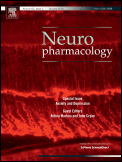
“Although opioids are highly efficacious analgesics, their abuse potential and other untoward side effects diminish their therapeutic utility. The addition of non-opioid analgesics offers a promising strategy to reduce required antinociceptive opioid doses that concomitantly reduce opioid-related side effects.
Inhibitors of the primary endocannabinoid catabolic enzymes fatty acid amide hydrolase (FAAH) and monoacylglycerol lipase (MAGL) show opioid-sparing effects in preclinical models of pain. As simultaneous inhibition of these enzymes elicits enhanced antinociceptive effects compared with single enzyme inhibition, the present study tested whether the dual FAAH-MAGL inhibitor SA-57 [4-[2-(4-chlorophenyl)ethyl]-1-piperidinecarboxylic acid 2-(methylamino)-2-oxoethyl ester] produces morphine-sparing antinociceptive effects, without major side effects associated with either drug class.
Although high doses of SA-57 alone were required to produce antinociception, low doses of this compound, which elevated AEA and did not affect 2-AG brain levels, augmented the antinociceptive effects of morphine, but lacked cannabimimetic side effects.
Because of the high abuse liability of opioids and implication of the endocannabinoid system in the reinforcing effects of opioids, the final experiment tested whether SA-57 would alter heroin seeking behavior. Strikingly, SA-57 reduced heroin-reinforced nose poke behavior and the progressive ratio break point for heroin.
In conclusion, the results of the present study suggest that inhibition of endocannabinoid degradative enzymes represents a promising therapeutic approach to decrease effective doses of opioids needed for clinical pain control, and may also possess therapeutic potential to reduce opioid abuse.”
https://www.ncbi.nlm.nih.gov/pubmed/27890602









